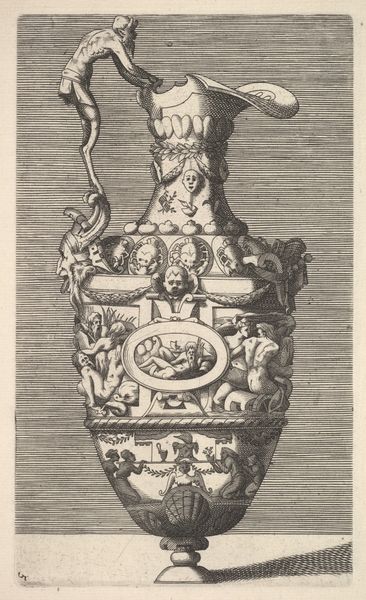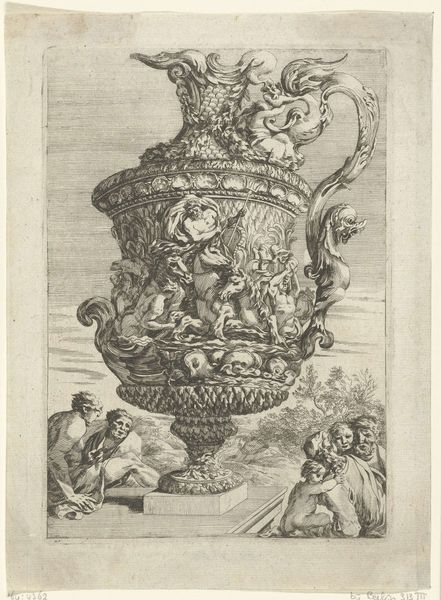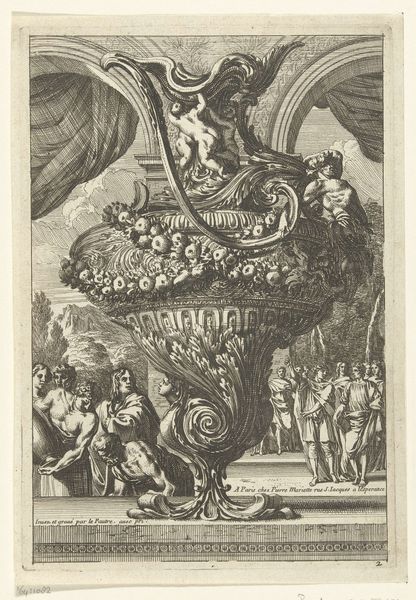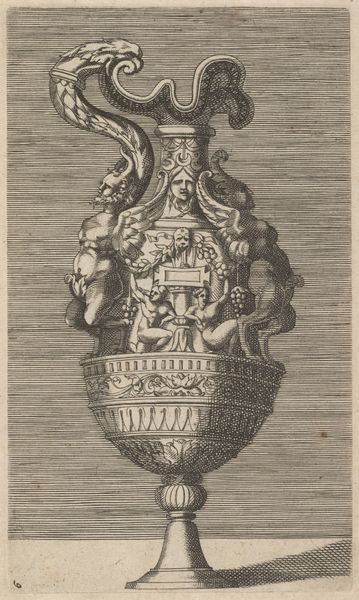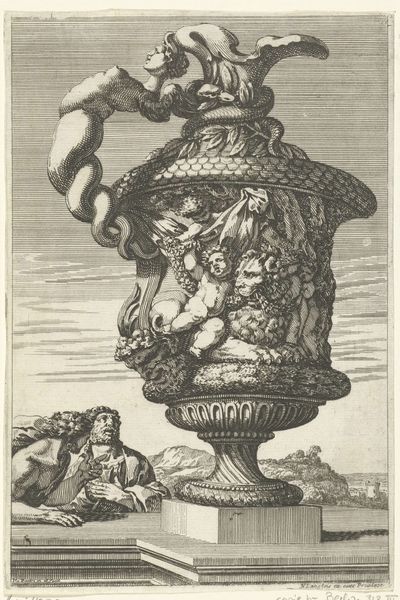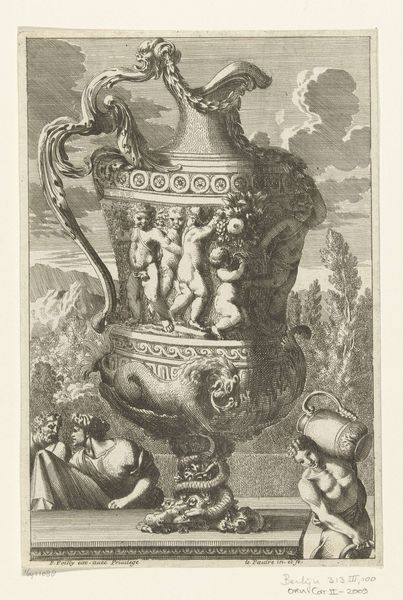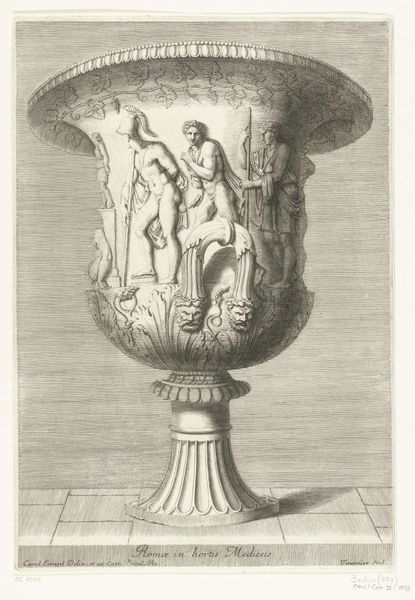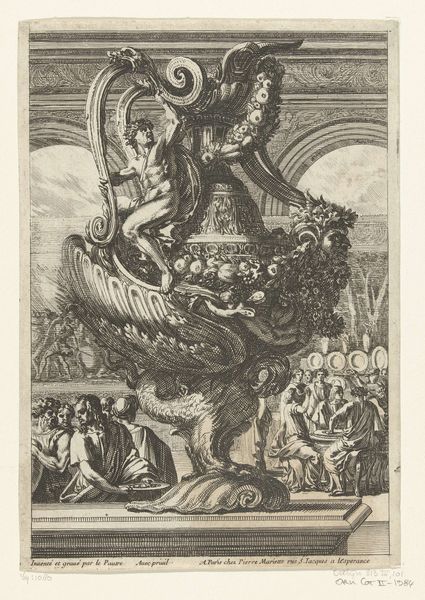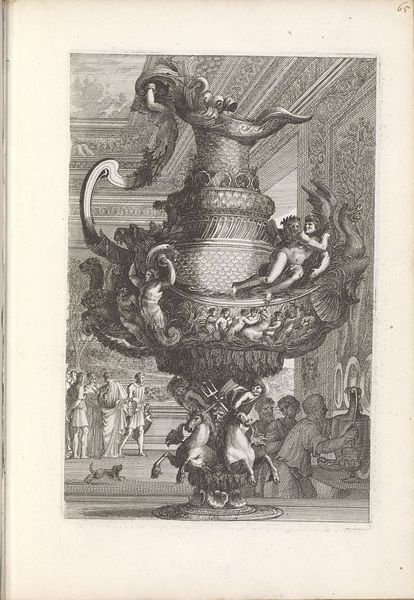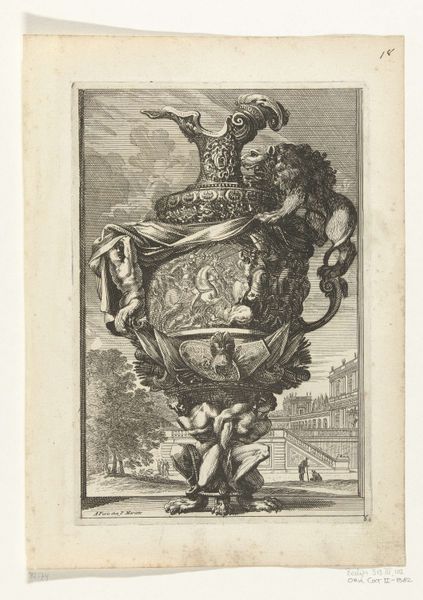
print, metal, engraving
#
allegory
# print
#
metal
#
figuration
#
form
#
11_renaissance
#
northern-renaissance
#
decorative-art
#
engraving
Dimensions: height 135 mm, width 199 mm
Copyright: Rijks Museum: Open Domain
Editor: Here we have "Pyranon," an engraving on metal made in 1563 by Johannes and Lucas van Doetechum. It's a striking, decorative piece. What strikes me is the almost aggressive ornamentation – it’s so elaborate. How do you interpret this work? Curator: Indeed, the overwhelming detail speaks volumes. To me, the vessel itself is secondary; it's a stage for symbolic figures and motifs. Consider the lion heads with rings. Lions often symbolize strength, courage, and even royalty. What could that imply when combined with the handles? Editor: Perhaps a kind of fortified power, like the handles are ready for anyone to try and take something. Curator: Precisely! And look at the cherubic figures; in the Renaissance, these winged children frequently represented divine love or even souls. They act almost as a bridge between the earthly and heavenly realms, wouldn't you agree? They remind the viewer of virtue and divinity. Editor: That makes sense! So, the vessel isn’t just a pretty thing, it’s packed with meaning from different spheres? Curator: Exactly! The arrangement of fruit is also relevant – bountiful nature. These aren't random choices; they speak to the ideals of the time. The work seems designed to be an ostentatious demonstration of learned understanding of these concepts. It begs the question, who was supposed to see this engraving? Editor: I hadn't even thought about that! Considering all those elements together… it really transforms my initial reading. Curator: That is what I love about iconography: once you start decoding its imagery, it reveals rich layers of historical thought.
Comments
No comments
Be the first to comment and join the conversation on the ultimate creative platform.

